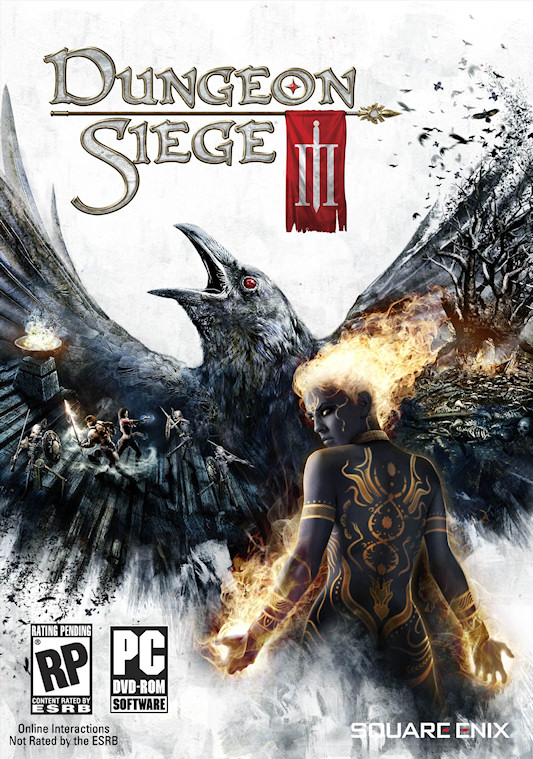Dungeon Siege III Review
-
Category: ReviewsHits: 23012

Article Index
Page 1 of 3
IntroductionDungeon Siege III is the long-awaited follow-up to Dungeon Siege (2002) and Dungeon Siege II (2005). The first two games in the series were developed by Chris Taylor and Gas-Powered Games, but this newest entry was developed by Obsidian Software in a fairly typical Obsidian type of move -- taking somebody else's franchise and running with it. Unfortunately, while Obsidian usually makes games more interesting and sophisticated when they gain control, this time they took a PC title and ran with it straight into consoles where nobody wanted it to be.
Characters
In Dungeon Siege III, you control one of four characters: sword-swinging Lucas, gun-toting Katarina, magic specialist Reinhart, or fire archon Anjali. Each character gets two battle stances (one for solo battles and another for group battles) and a defensive stance, plus nine abilities (three for each stance). As characters advance in level (up to level 30), they eventually gain access to all of their abilities; the only things you select for the characters are their "talents" (upgradeable passive bonuses) and "proficiencies" (upgrades for their abilities).
As an example, one of Anjali's abilities is called Aura of Immolation. It causes fire to appear at her feet, and any enemies who step into the fire get burned for some damage over time. To improve the ability, you're given the choice of selecting the Fiery Presence proficiency, which increases the amount of damage done by the ability, or the Cauterize proficiency, which adds a healing effect to it. Each ability can have up to five proficiency upgrades, and by the end of the game you can completely upgrade six of the nine abilities.
As for talents, some of Anjali's choices include Spiritual Devastation, which gives Anjali a chance to stun enemies when she scores a critical hit, and Fiery Fury, which increases Anjali's damage for a short time after she defeats an enemy. Each character gets 10 talents in total, and just like with abilities, they can be upgraded five times each, meaning that by the end of the game you can completely upgrade six of the ten talents for each character.
Since characters gain so many of their possible upgrades during the course of the campaign, character development isn't all that exciting. I played all four characters all the way to the end of the game, and for each one I always got to the point where I didn't care whether they leveled or not because there weren't any more upgrades that I was interested in. To me, if an RPG doesn't generate discussions somewhere about possible character builds, then it's barely worth playing, and I doubt anybody out there is agonizing over their choices in Dungeon Siege III.
Gameplay
Dungeon Siege III isn't anything like either of the other two games in the series -- which makes sense since Dungeon Siege II wasn't anything like Dungeon Siege, either. The main difference here is that Dungeon Siege III was clearly designed with consoles in mind, to the point where it was barely playable using a keyboard and mouse when it first came out. Fortunately, Obsidian quickly released a patch to make the controls at least passable on the PC.
In the single player game, you control one character, and you also get a companion (one of the other three characters, once you've met them during the campaign) who is under computer control. For multiplayer, you can choose between an offline two-player mode (where the second player takes over for your companion) and an online four-player mode. I didn't try out either of the multiplayer modes, but my understanding is that they use the same campaign as the single player mode.


